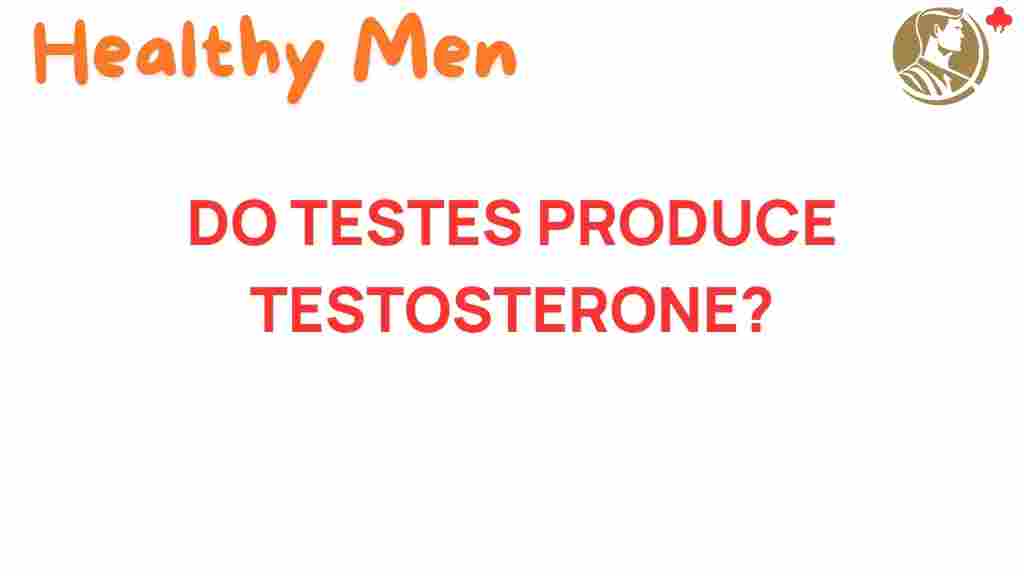The Secret Life of Testes: Unraveling Testosterone Production
When we think about male health, the conversation often revolves around testosterone. This powerful hormone plays a pivotal role in numerous biological functions, from reproductive health to overall vitality. But how is testosterone produced, and what role do the testes play in this intricate process? In this article, we delve into the secret life of the testes, unraveling the complexities of testosterone production and its significance in male health and the endocrine system.
Understanding the Testes and Their Role
The testes, or testicles, are two small organs located in the scrotum, responsible for several crucial functions in male reproduction and health. Their primary roles include:
- Producing sperm cells for reproduction.
- Generating testosterone, the main male sex hormone.
- Regulating various physiological processes through hormone production.
Let’s explore how the testes contribute to hormone production and the overall endocrine system.
The Anatomy of the Testes
The testes are composed of several structures that facilitate their functions:
- Seminiferous tubules: The site of sperm production, where spermatogenesis occurs.
- Interstitial cells (Leydig cells): Responsible for producing testosterone.
- Sertoli cells: Support and nourish developing sperm cells.
Understanding these components is essential for grasping how testosterone is synthesized within the testes.
The Process of Testosterone Production
Testosterone production is a complex process regulated by the endocrine system. Here’s a step-by-step breakdown:
1. Hypothalamus and Pituitary Gland
The journey of testosterone production begins in the brain. The hypothalamus releases gonadotropin-releasing hormone (GnRH), which stimulates the pituitary gland to produce:
- Luteinizing hormone (LH)
- Follicle-stimulating hormone (FSH)
2. Stimulation of Leydig Cells
LH travels through the bloodstream to the testes, specifically targeting the Leydig cells. This stimulation prompts these cells to produce testosterone.
3. Synthesis of Testosterone
Testosterone is synthesized from cholesterol through a series of biochemical reactions. The key steps include:
- Conversion of cholesterol to pregnenolone
- Transformation of pregnenolone into various steroid hormones
- Final production of testosterone
4. Release into the Bloodstream
Once synthesized, testosterone enters the bloodstream, where it binds to proteins such as sex hormone-binding globulin (SHBG) and albumin. This binding regulates the hormone’s availability to tissues throughout the body.
The Importance of Testosterone in Male Health
Testosterone is essential for a variety of biological functions that contribute to overall male health:
- Reproductive Health: Testosterone is crucial for sperm production and libido.
- Muscle Mass: The hormone promotes muscle growth and strength.
- Bone Density: Testosterone helps maintain bone density, reducing the risk of osteoporosis.
- Mood Regulation: Adequate testosterone levels can influence mood and mental health.
- Fat Distribution: Testosterone plays a role in fat distribution in the body.
Maintaining optimal testosterone levels is vital for these functions, highlighting the importance of the testes in male health.
Factors Affecting Testosterone Production
Several factors can impact testosterone production, including:
- Age: Testosterone levels naturally decline with age.
- Health Conditions: Obesity, diabetes, and hormonal disorders can affect testosterone levels.
- Medications: Certain medications may interfere with hormone production.
- Stress: Chronic stress can lead to hormonal imbalances.
- Lifestyle: Diet, exercise, and sleep patterns significantly influence testosterone levels.
Understanding these factors can help men take proactive steps toward maintaining their hormonal health.
Common Signs of Low Testosterone
Low testosterone, or hypogonadism, can manifest in various ways. Common symptoms include:
- Fatigue and decreased energy levels
- Reduced libido and sexual dysfunction
- Loss of muscle mass and strength
- Increased body fat
- Mood changes, including depression or irritability
If you experience these symptoms, it is essential to consult a healthcare professional for proper evaluation and potential treatment options.
Diagnosis and Testing
To diagnose low testosterone levels, healthcare providers typically conduct:
- Blood Tests: Measuring total and free testosterone levels.
- Medical History: Evaluating symptoms and health conditions.
- Physical Examination: Assessing any signs of hormonal imbalance.
For more information on diagnostic processes, visit this health insights resource.
Treatment Options for Low Testosterone
There are several approaches to addressing low testosterone levels:
- Lifestyle Changes: Incorporating a balanced diet, regular exercise, and sufficient sleep can boost testosterone naturally.
- Hormone Replacement Therapy (HRT): Testosterone replacement therapy can help restore hormone levels but should be approached cautiously and under medical supervision.
- Medications: Certain medications can stimulate natural testosterone production.
Before starting any treatment, it is vital to discuss options with a healthcare professional to determine the best course of action tailored to individual needs.
Potential Risks of Testosterone Therapy
While testosterone therapy can be beneficial, it also comes with potential risks, including:
- Increased risk of cardiovascular issues
- Potential for sleep apnea
- Enlargement of breast tissue (gynecomastia)
- Hormonal imbalances leading to additional health issues
Regular monitoring by a healthcare provider is essential to mitigate these risks during treatment.
Conclusion
The testes play a vital role in hormone production, particularly testosterone, which is crucial for male health and reproductive functions. Understanding the biology of the testes and the intricacies of testosterone production can empower men to take control of their health. By recognizing the signs of low testosterone and exploring available treatment options, men can improve their quality of life and overall well-being. Whether through lifestyle changes, medical intervention, or both, maintaining hormonal balance is key to a healthy life.
For more insights into male health and hormone production, check out our comprehensive guide.
This article is in the category Conditions and created by healthymen Team
